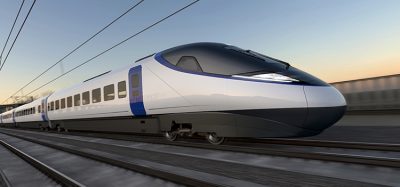Safeguarding the Norwegian railway network
Posted: 11 April 2014 | | No comments yet
The Norwegian Railway Authority was established in 1996 with the task to safeguard public interest with respect to safety and to enforce the railway law and regulations. In Norway, responsibility for safety lies with the 37 individual railway companies. The jurisdiction of the Norwegian Railway Authority embraces all railway operations in Norway – heavy rail, light-rail, metro and tram – for infrastructure as well as rolling stock. In general terms, it covers operations and equipment related to passenger and freight transport running on tracks as well as the companies authorised for those purposes.
Even though Norway is not a member of the European Union, any Regulation, Directive, Decision or Technical Specifications for Interoperability (TSI) related to heavy rail is implemented in the Norwegian legislation in accordance with the European Economic Area (EEA) Agreement. The authority tasked with this implementation is the Ministry of Transport and Communications, but the Norwegian Railway Authority is normally delegated the task to develop and implement the required regulations. As a result, the number and extent of Norwegian-specific regulations for the national rail network are decreasing, and the conse – quence is a set of rules heavily influenced by European law.
Quality reporting
Our supervision strategy is risk-based. One of our most important tools is the accidentdatabase. All duty-holders must continuously report undesired incidents to the Norwegian Railway Authority within 72 hours or eight days, depending on the severity of the incidents. Over the past few years there has been a high increase in the number of reported undesired incidents, i.e. those which might have led to accidents. There are indications that this increase in number is the result of better reporting routines of the duty-holders. Following many years of increase, it now looks like the number has stabilised itself at approximately 30,000 p.a. Although this number may seem high and indicates a low level of safety for Norwegian railways, the situation is actually the opposite. The waste number of reports concerns near misses, only indicating where risks may appear if not mitigated. But the awareness towards potential risks and risk mitigation is heavy, and the number of railway accidents is only 0.55 per million train km in Norway.
The Norwegian Railway Authority is trying to facilitate ways which makes reporting less burdensome for duty-holders. Usually there is no separate reporting to the Norwegian Railway Authority on top of the accident and near miss reporting internally in the companies/duty-holders. Then the information is automatically and seamlessly transferred to the Norwegian Railway Authority. Quality reporting is necessary so that the Norwegian Railway Authority can develop an accurate risk picture and provide a risk based inspection regime. The Norwegian Railway Authority also allows integration with alternative IT-systems for small duty-holders, if technically feasible, to enable the simplest possible reporting system for the duty-holders.
If there is room for improvement it is in regards to reporting of technical faults influencing safety, e.g. fire damage on rolling stock, uncovered during maintenance.
Climate and interoperability
There are large topographic and climatic variations between European countries. There are many long railway tunnels in Norway and we also have many long and steep hills requiring continuous use of breaks. The temperature in tunnels can vary between +6ºC inside a tunnel to -35ºC outside the tunnel. Large variations in temperature combined with large amounts of snow lead to high demands on brakes. A considerable increase in breaking-paths especially occur when the snow is whirling at the same time as the temperature lies between 0ºC and -7-8ºC.
Due to new noise-requirements, the duty-holders must replace steel brakes with composite break-blocks in Europe. These break-blocks create a polished surface on the wheels which cause less noise, but which also comprise several unknown factors, e.g. will they draw moisture? If so, what happens when they freeze? Driving through a lot of long tunnels can cause condensation on break blocks and wheels and the break-effect is reduced when water or ice causes aqua-planing or ice-planing. A particular procedure can be used in challenging conditions to maximise break-effect. This is light breaking every now and then in order to keep a potential water layer at bay. This type of breaking is important in advance of large drops and in advance of an expected stop. New duty-holders in Norway who are not accustomed to driving in these conditions must seek information prior to driving in Norway.
This is why Europe needs to cooperate with finding a way to show that a particular type of composite break-block has characteristics which are suitable for the climatic conditions they are to be subjected to. A test-method which, with a high degree of certainty, can conclude that the block is suitable for Norwegian conditions can be expensive for Europeans if it is a generic requirement in order to receive an approval. The Composite Break Block (CBB) Group in the European Railway Agency (ERA) are discussing where the threshold lies in order to safeguard interoperability.
Emergency preparedness
The topography and high number of tunnels in Norway also impacts on the need for duty-holders’ emergency preparedness. The Norwegian Railway Authority requires that the duty-holders must establish and operate an emergency preparedness system to reduce the consequences of incidents and accidents. The system must be based on a documented emergency preparedness analysis. Both the infrastructure manager as well as the railway undertakings must prepare an analysis based on traffic volumes, type of transport, number and condition of the tunnels and special challenges, such as mountain passes and stretches prone to landslides. One of the challenges we have in Norway is the relatively large proportion of trains, infrastructure and tunnels built/constructed a long time ago and the standards we have today. Many of the old tunnels have inferior fire safeguarding and few alternatives for evacuation.
One part of emergency preparedness is initially handled by the fire and emergency services, which report to individual councils. However, there are a large number of councils in Norway and they are all self-governed. The Norwegian Railway Authority therefore has no decision-making powers over councils, and emergency preparedness capacity varies considerably between councils.
Many mountain passes can often be challenging to access for emergency services. In those cases the railway undertakings must consider additional measures, e.g. provide equipment such as rescue-trains, fire water transport, blankets and small heaters to keep passengers alive through a cold winter night on the Hardangervidda mountain pass.
In Norway we have been spared from major railway accidents during the last 13 years, but we have had several serious incidents that had the potential of becoming major accidents, including:
- A passenger train type Flirt derailed during a test-drive not far from Nykirke Station in 2012 – several people were injured and the train set was substantially damaged as well as the infrastructure.
- A train with 257 passengers from Bergen drove into a burning snow shelter by the station of Hallingskeid in 2011. The train stopped in front of the fire, but due to loss of power the train was unable to back out. All passengers were evacuated, and there were no injuries. However the accident resulted in large material damages, the train was totally wrecked and the entire infrastructure through the snow shelter was damaged.
- A set of 16 empty container freight cars rolled uncontrollably from Alnabru shunting yard down to Loenga and into the sea at Sydhavna in the Port of Oslo in 2010. Three people were killed and several were injured.
- The latest major accident in Norway – where passengers were killed – was the Åsta-accident in 2000. Nineteen people lost their lives in a head-on collision and the fire that followed.
The Norwegian Railway Authority is set to re-examine emergency preparedness plans based on the emergency preparedness analysis of each separate railway undertaking. The largest actors in Norway are currently going through their emergency preparedness plans, and the Norwegian Railway Authority is keeping a careful watch on the process. Exercises show that cooperation between different actors is still a challenge.
Security
Norwegian authorities place heavy emphasis on general emergency preparedness following a large terror incident in 2011. The attack was not directed towards the railway industry, but this industry is also scrutinising its preparedness in case of terrorist actions. The Norwegian Railway Authority is in cooperation with the railway industry to draw-up regulations on safety management in this area. The regulations include evaluations of threat, systems for admissions control, IT security and emergency preparedness. The regulations are due during the summer of 2014.
Guidance
The Norwegian Railway Authority spends many resources on providing guidance for the railway actors on railway law and regulations. The Norwegian Railway Authority arranges ‘morning-meetings’ every other month where the railway actors can discuss safety and interoperability with each other and the Norwegian Railway Authority. Every year we arrange a conference about safety for actors within the railway, tram and underground marketplace.
Reference
Biography
Erik Ø. Reiersøl-Johnsen was appointed Director General of the Norwegian Railway Authority in June 2002. For the previous 20 years he worked with safety engineering and safety management in the oil industry. Erik joined Saga Petroleum in 1988 and worked as Head of the Safety Department and Head of the Department for Working Environment for 10 years. In June 2000 he joined Norsk Hydro working as Health, Safety and Environmental Manager in offshore development projects. Erik has a Master of Science in Mechanical Engineering and Safety Management from the Norwegian University of Technology (NTH/NTNU).






